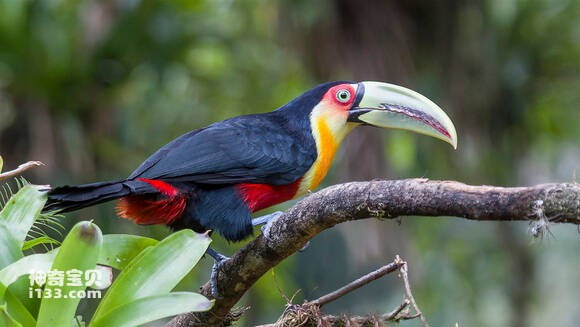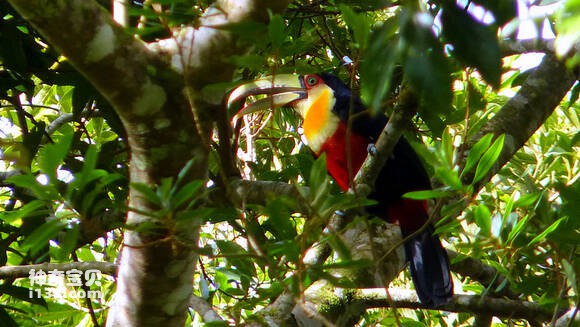Ramphastos dicolorus
IUCN
LCBasic Information
Scientific classification
- name:Ramphastos dicolorus
- Scientific Name:Ramphastos dicolorus,Green-billed toucan
- Outline:Climbing birds
- Family:
Vital signs
- length:About 60 cm
- Weight:About350g
- lifetime:No textual research information is available
Feature
Distribution and Habitat
It is found in South America (Colombia, Venezuela, Guyana, Suriname, Ecuador, Peru, Bolivia, Paraguay, Brazil, Chile, Argentina, Uruguay, and the Malvinas Islands (also known as the Falkland Islands).
The red-breasted toucan lives mainly in lowland rain forests, sometimes in open areas with sparse trees nearby. They are rarely seen above 1,700 metres above sea level.
Appearance
The red-breasted toucan looks a little like a hornbill, is up to 60 cm long and weighs about 350 grams. The body feathers are mainly black, and the breast is yellow with some citrus. Its belly is covered with red feathers, and the underside of its tail is bright red. It has a green beak with a black stripe on the base of the beak. The nostrils of the adult bird are hidden under the base of the beak. The bird's beak is actually very light, its beak is four inches long, not nearly as heavy as it looks. The outside is a thin sheath of keratin, the inside is hollow, but there are many thin bone support rods staggered. The toucan's tongue is very long, the beak margin is clearly serrated, and there is no mouth beard around the beak base. The skin on the exposed part of the face and jaw is bright red.
Details
Ramphastos dicolorus, or Green-billed toucan, is a medium-sized climbing bird.

The red-breasted toucan's song is hoarse and low. It is omnivorous, feeding on fruits, seeds and insects, and sometimes raiding the nests of small birds, eating eggs and chicks.
The red-breasted Toucan nests in tree holes, and the preferred holes are good wood, the opening width is just enough for the adult bird to drill into, and the hole is 17 cm to 2 meters deep. The presence of suitable burrows near the root of the tree will also attract birds that normally nest in high places to nest near the ground. - Lay 2 to 4 eggs. Smooth white eggs are piled in unlined holes and hatch in about 16 days. The hatchlings are completely naked and need at least three weeks to open their eyes, and after hatching, it takes more than 50 days for the chicks to live their lives independently in the leaf cluster.
In 2018, it was assessed to the IUCN Red List of Threatened Species.
Listed in Appendices I, II and III of the Convention on International Trade in Endangered Species of Wild Fauna and Flora (CITES) 2019 edition Appendix III.
Protect wild animals and eliminate wild meat.
Maintaining ecological balance is everyone's responsibility!








